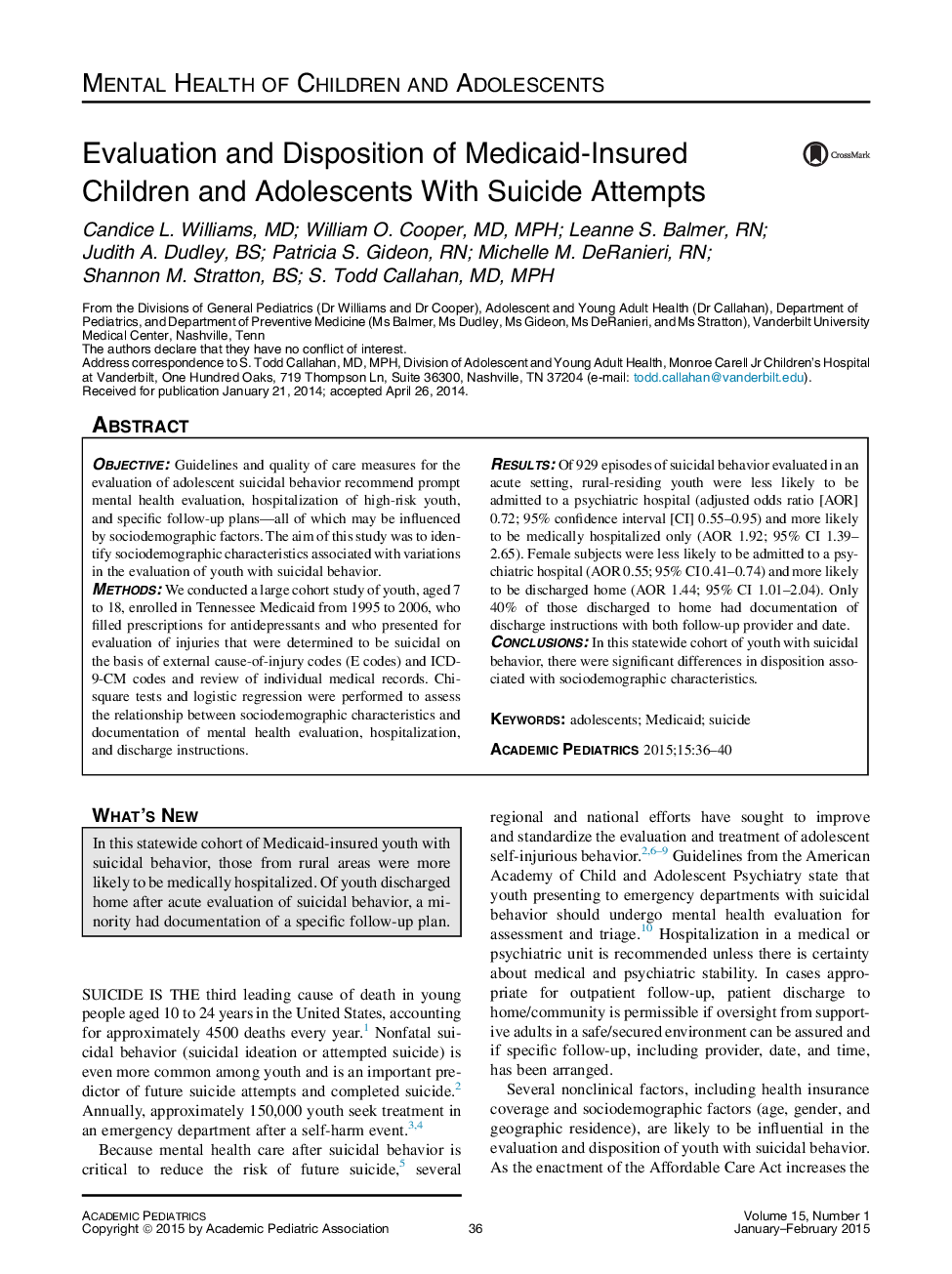| Article ID | Journal | Published Year | Pages | File Type |
|---|---|---|---|---|
| 4139552 | Academic Pediatrics | 2015 | 5 Pages |
ObjectiveGuidelines and quality of care measures for the evaluation of adolescent suicidal behavior recommend prompt mental health evaluation, hospitalization of high-risk youth, and specific follow-up plans—all of which may be influenced by sociodemographic factors. The aim of this study was to identify sociodemographic characteristics associated with variations in the evaluation of youth with suicidal behavior.MethodsWe conducted a large cohort study of youth, aged 7 to 18, enrolled in Tennessee Medicaid from 1995 to 2006, who filled prescriptions for antidepressants and who presented for evaluation of injuries that were determined to be suicidal on the basis of external cause-of-injury codes (E codes) and ICD-9-CM codes and review of individual medical records. Chi-square tests and logistic regression were performed to assess the relationship between sociodemographic characteristics and documentation of mental health evaluation, hospitalization, and discharge instructions.ResultsOf 929 episodes of suicidal behavior evaluated in an acute setting, rural-residing youth were less likely to be admitted to a psychiatric hospital (adjusted odds ratio [AOR] 0.72; 95% confidence interval [CI] 0.55–0.95) and more likely to be medically hospitalized only (AOR 1.92; 95% CI 1.39–2.65). Female subjects were less likely to be admitted to a psychiatric hospital (AOR 0.55; 95% CI 0.41–0.74) and more likely to be discharged home (AOR 1.44; 95% CI 1.01–2.04). Only 40% of those discharged to home had documentation of discharge instructions with both follow-up provider and date.ConclusionsIn this statewide cohort of youth with suicidal behavior, there were significant differences in disposition associated with sociodemographic characteristics.
